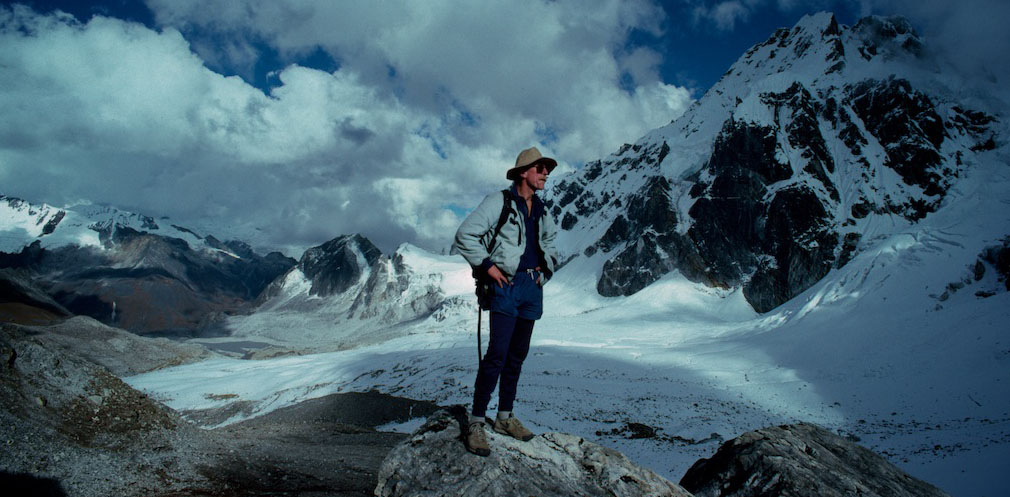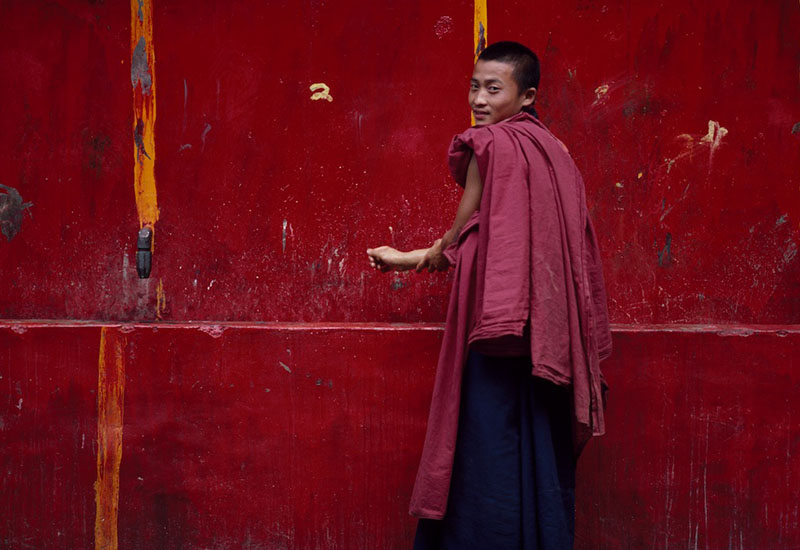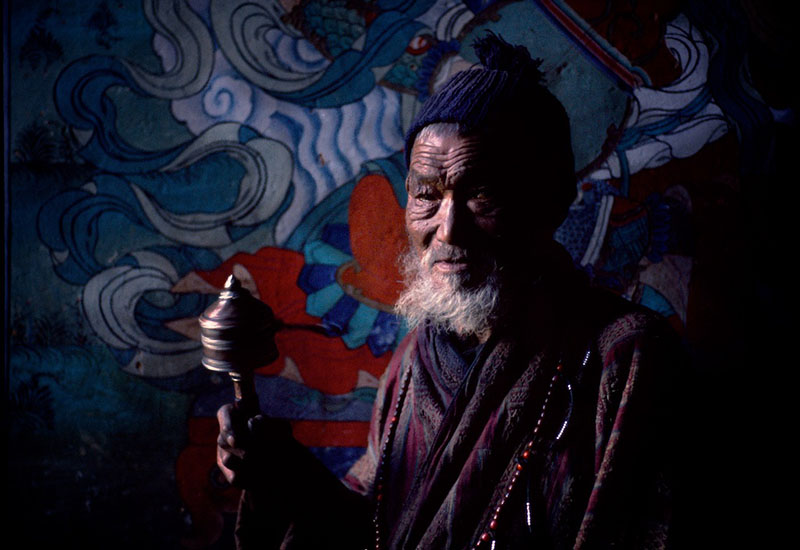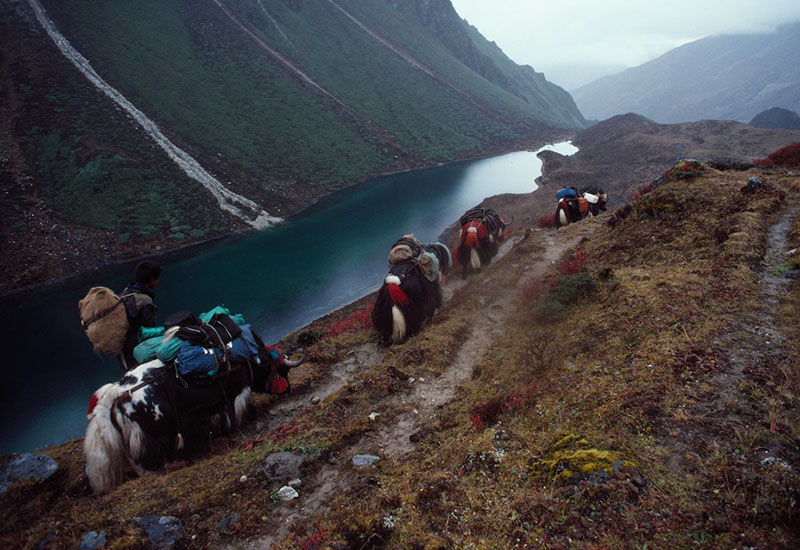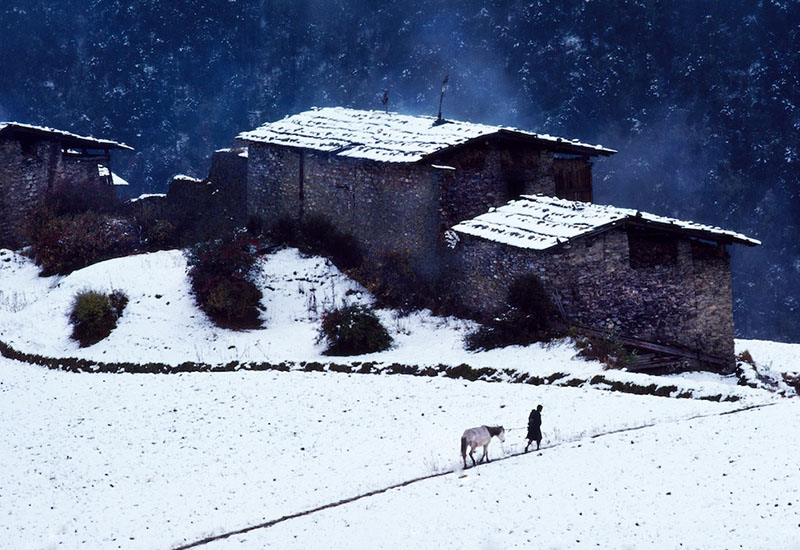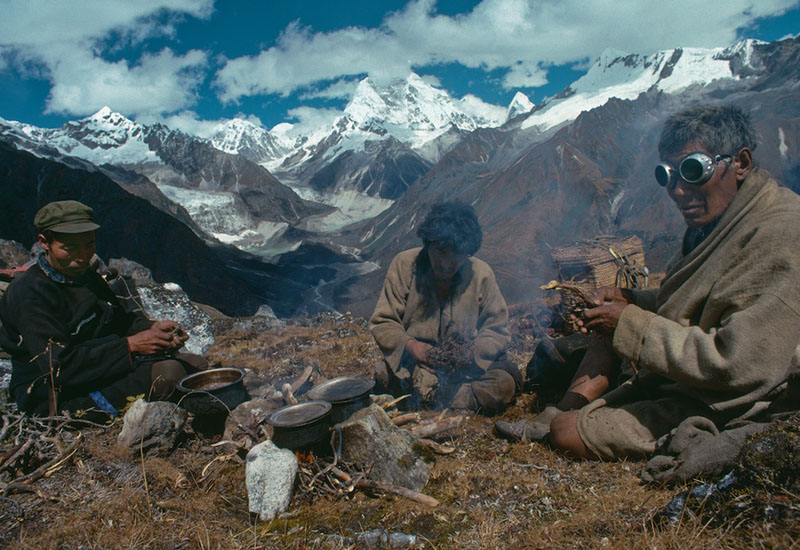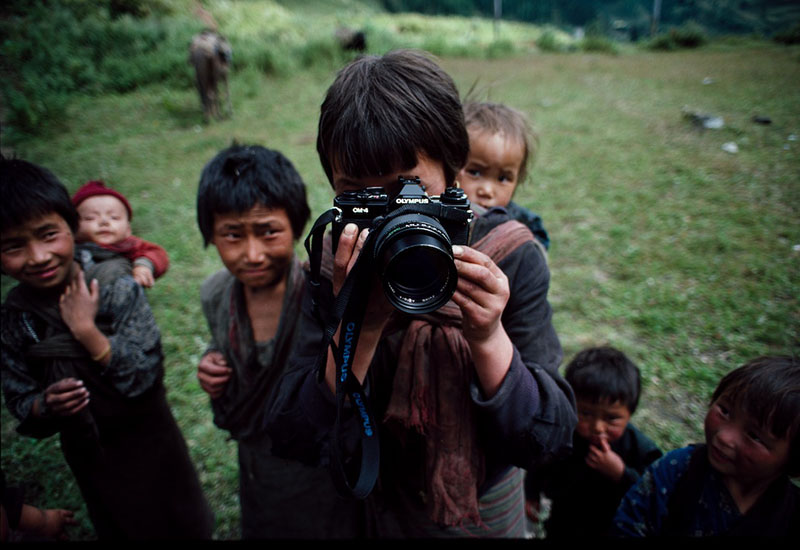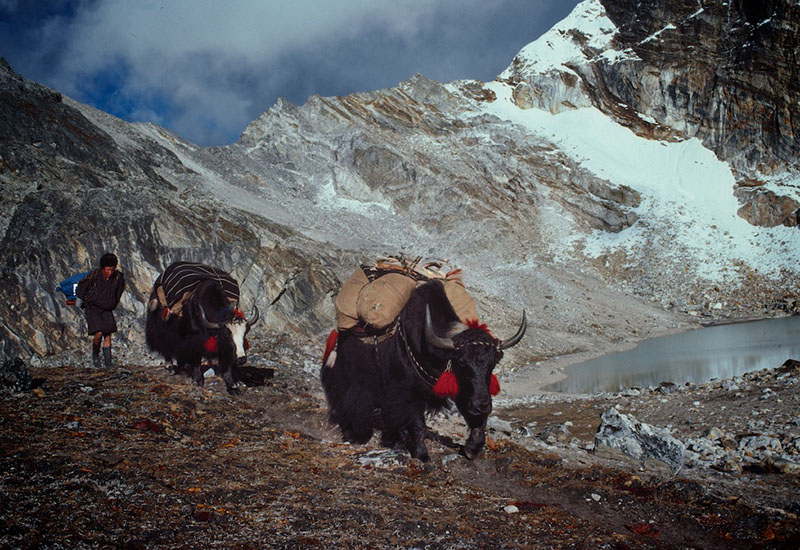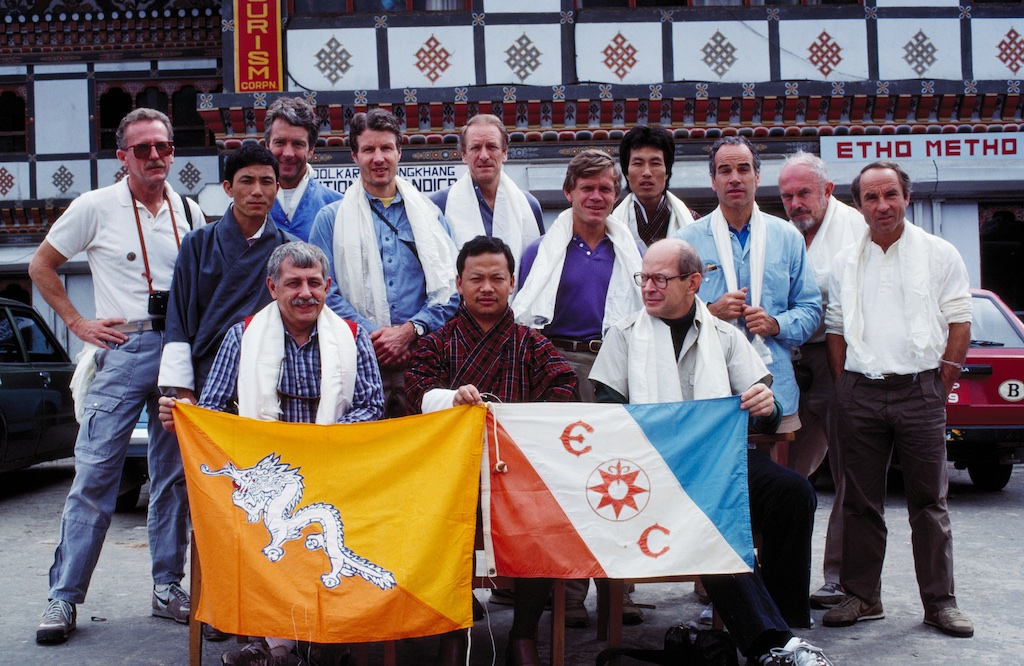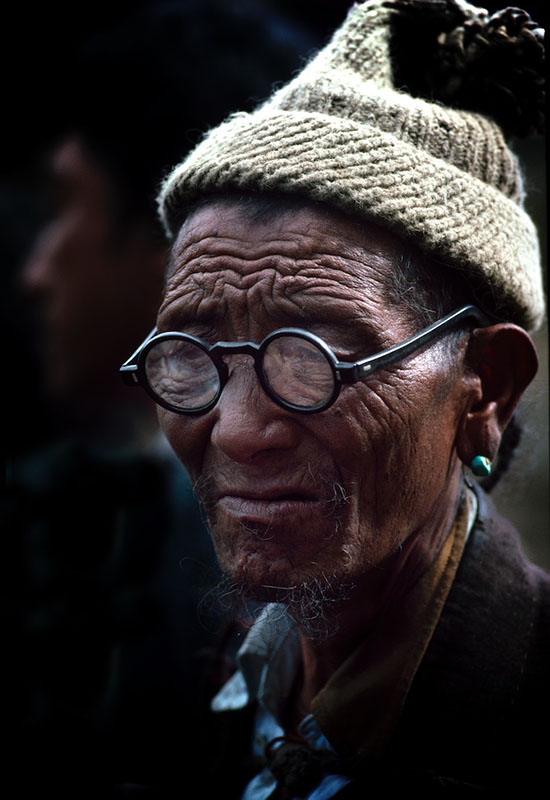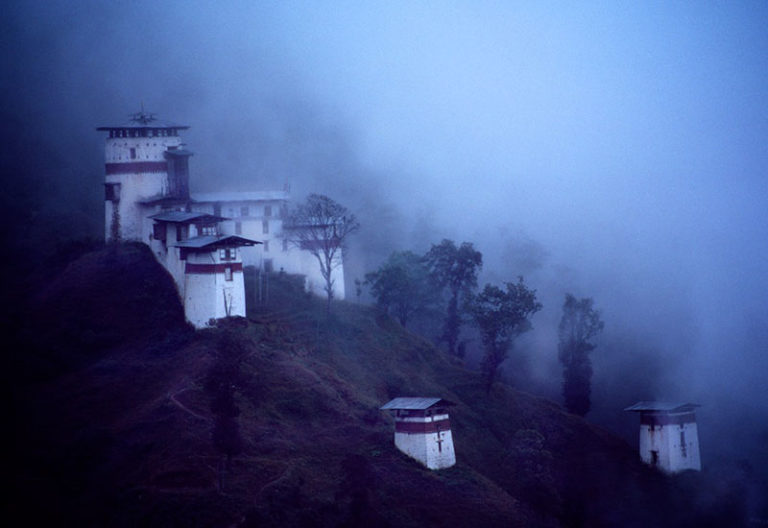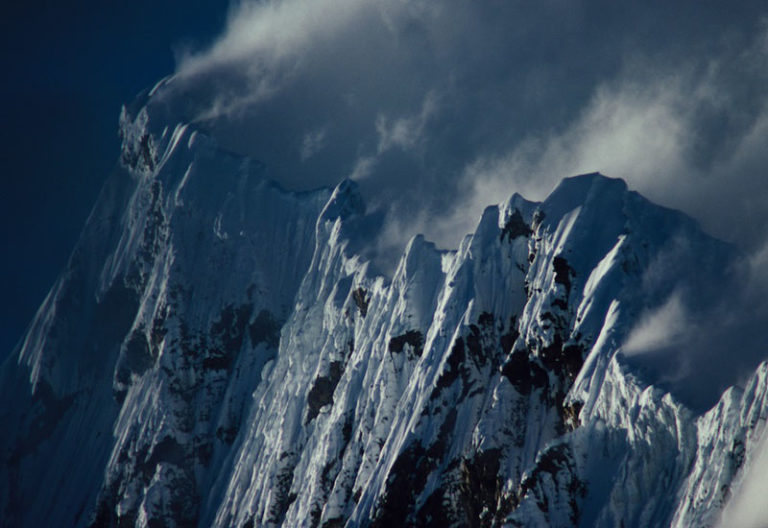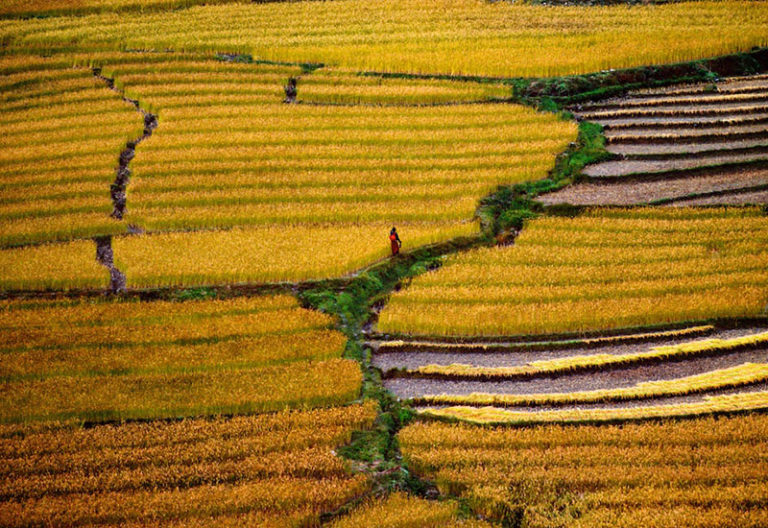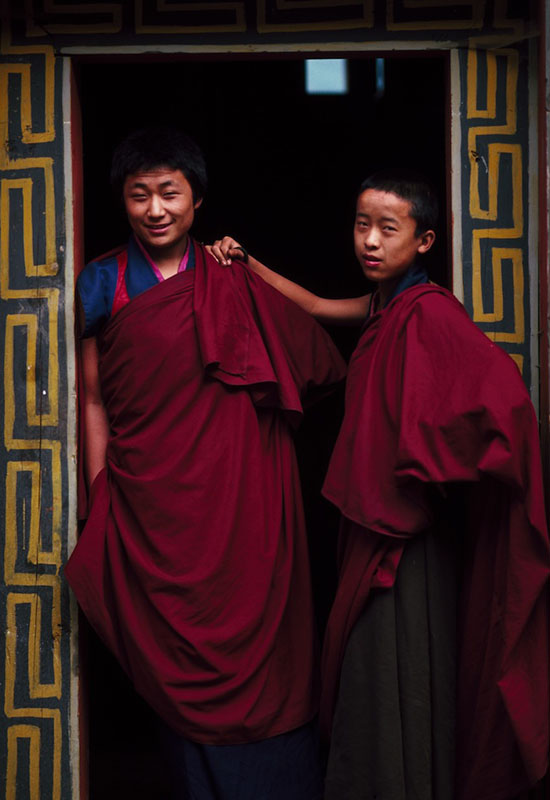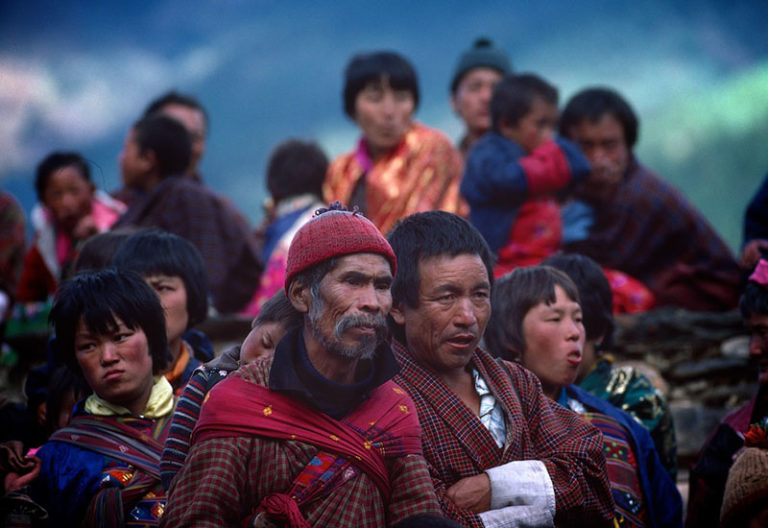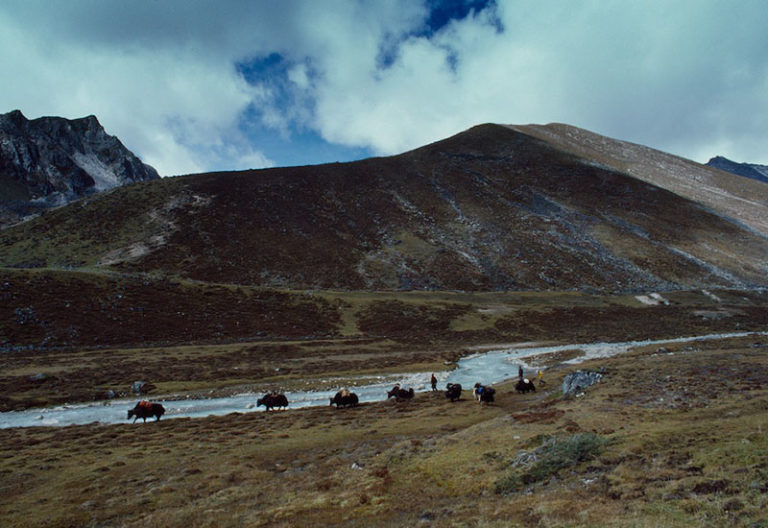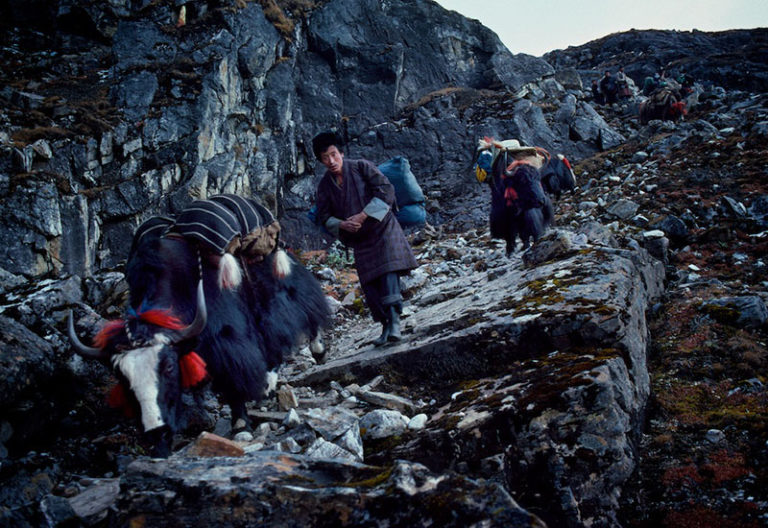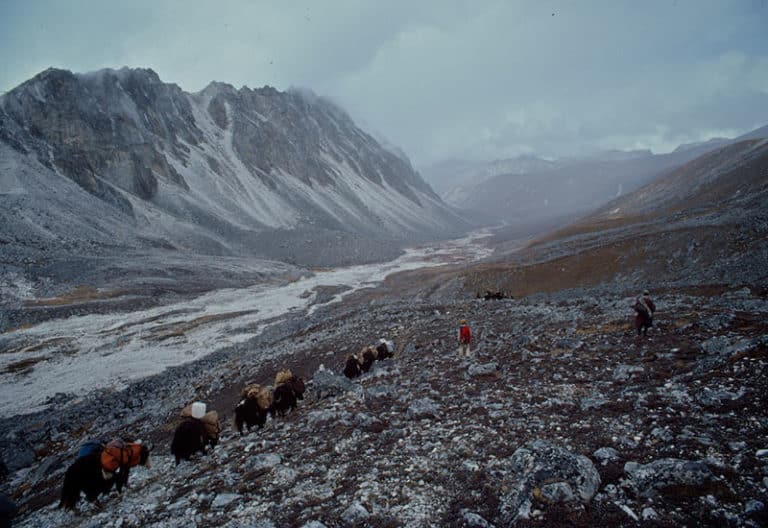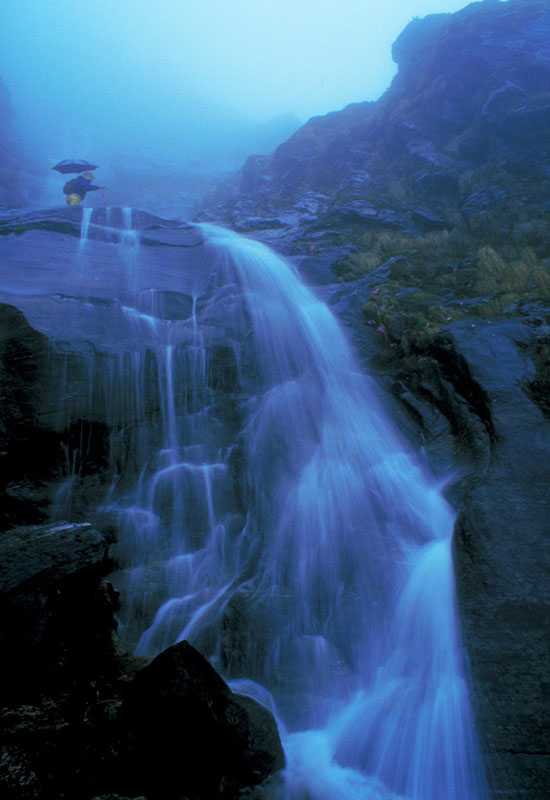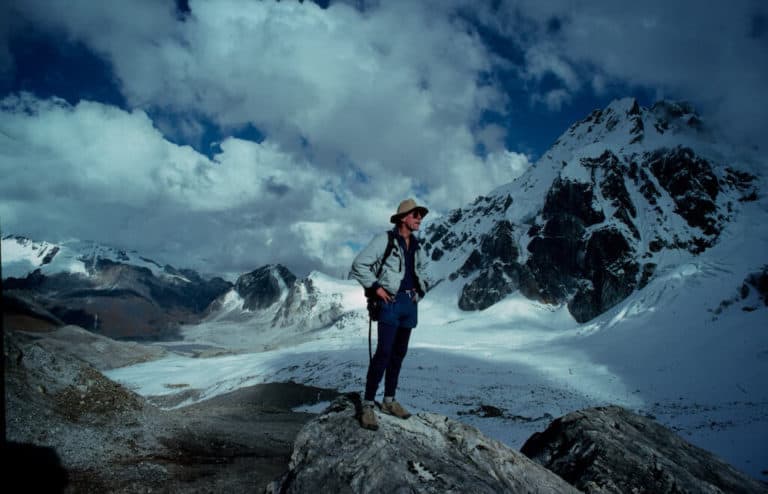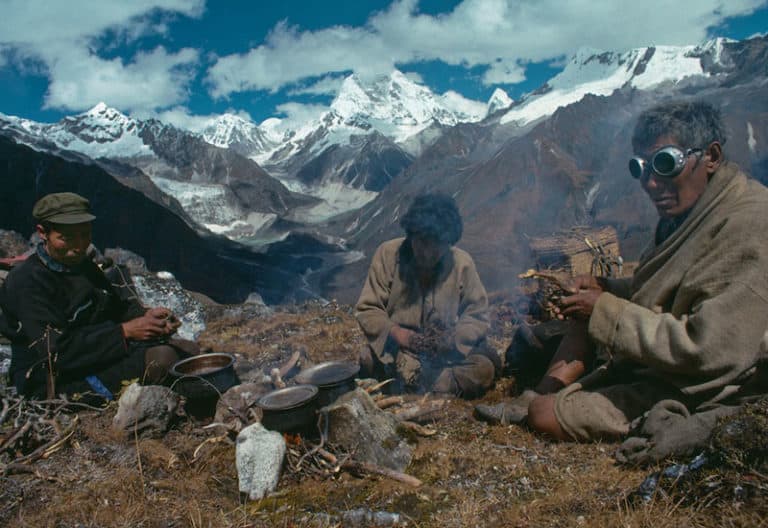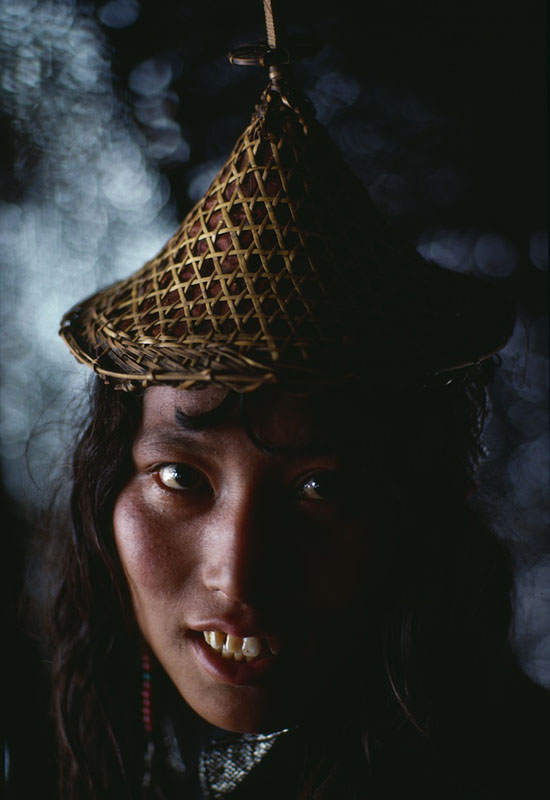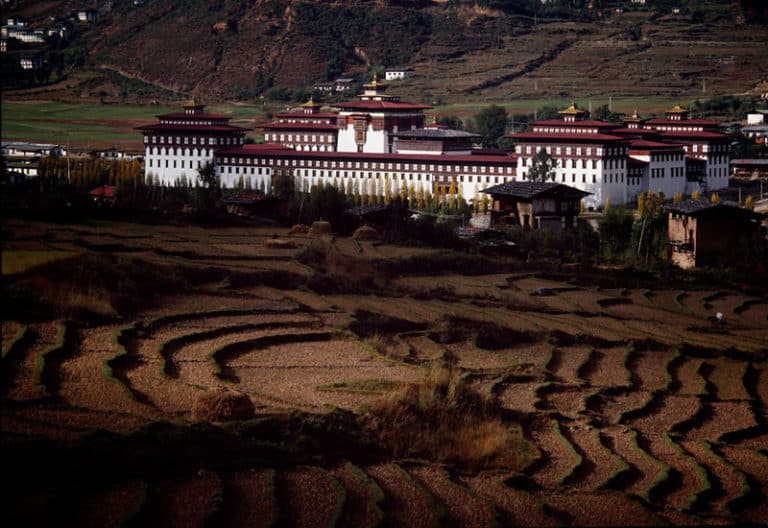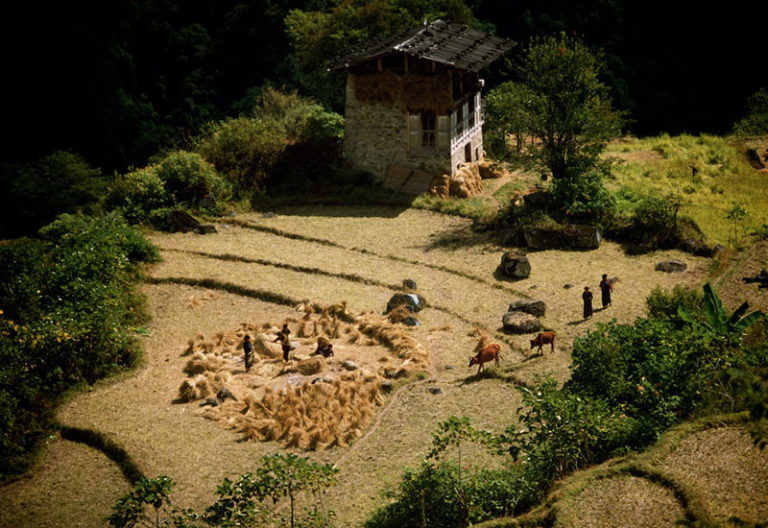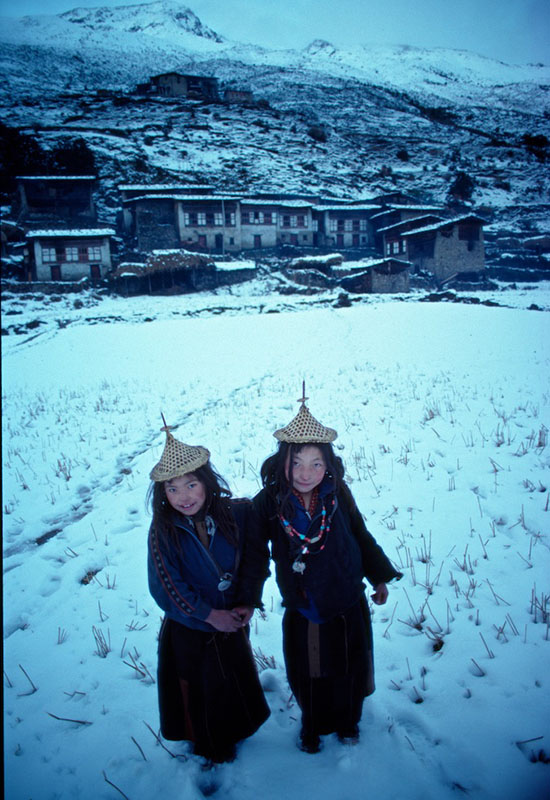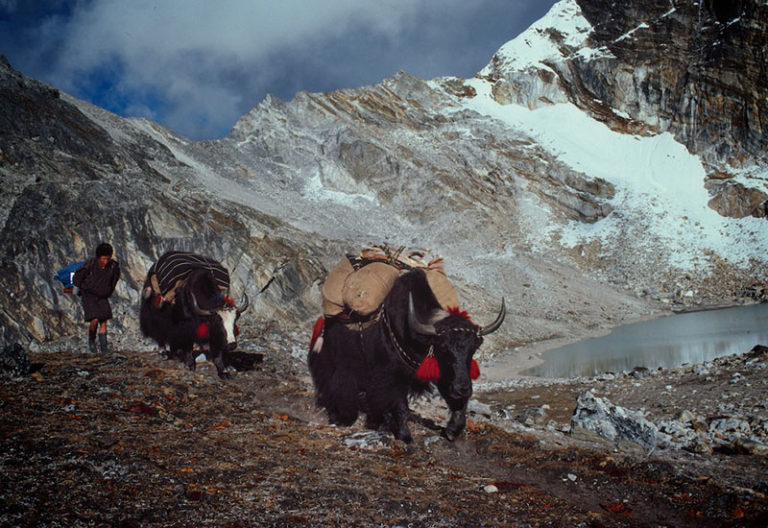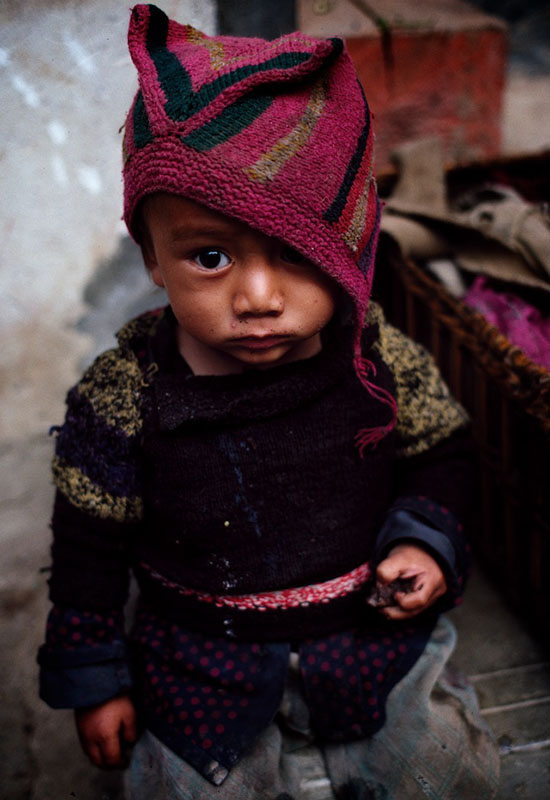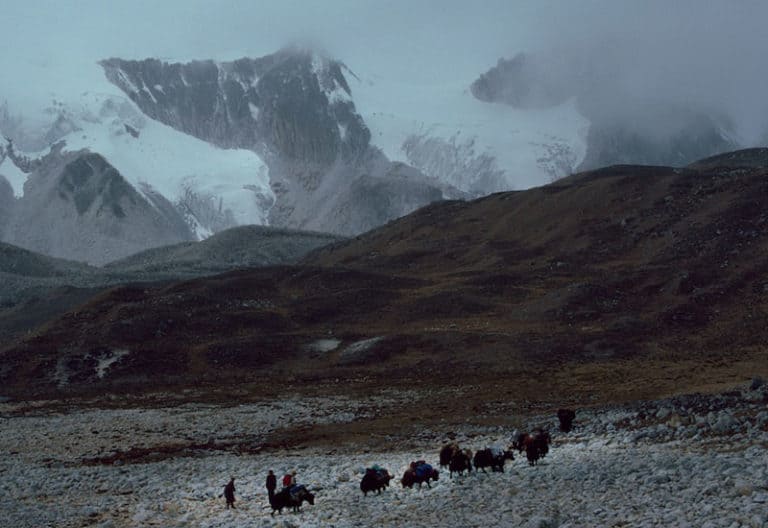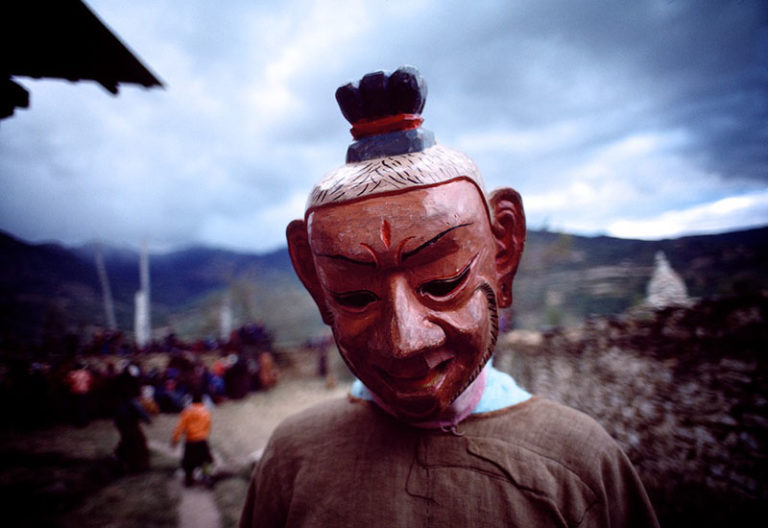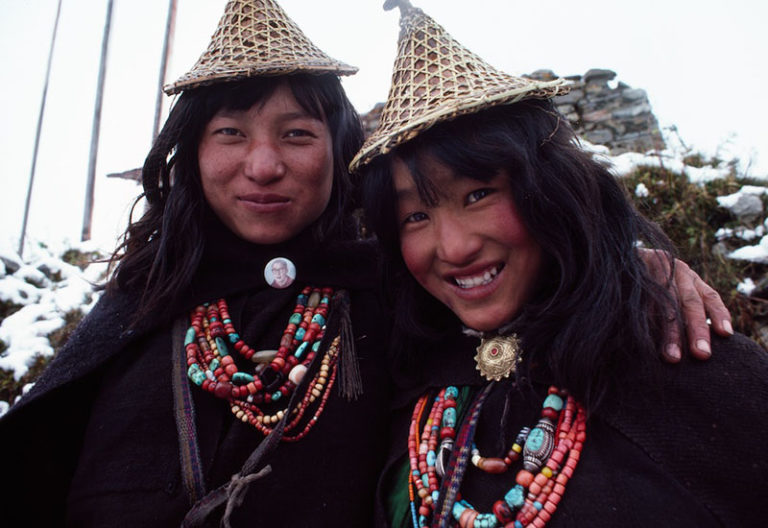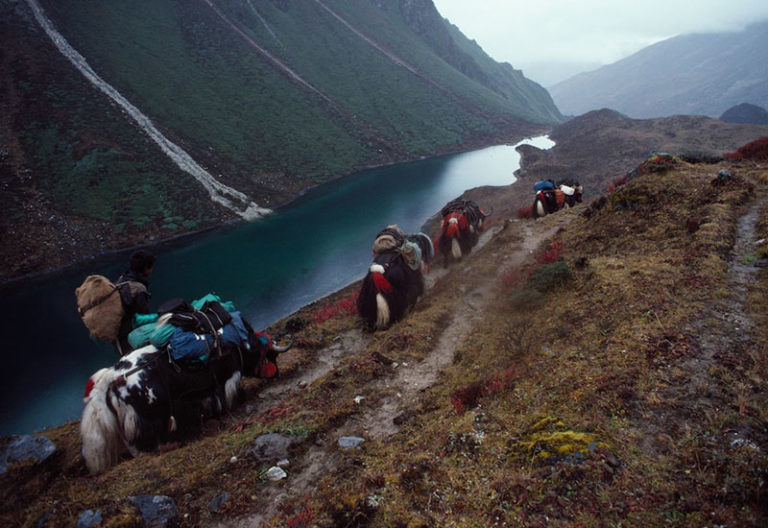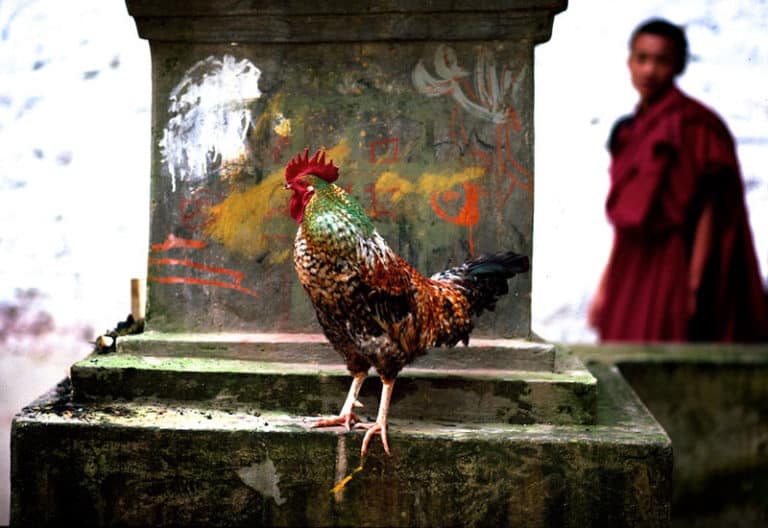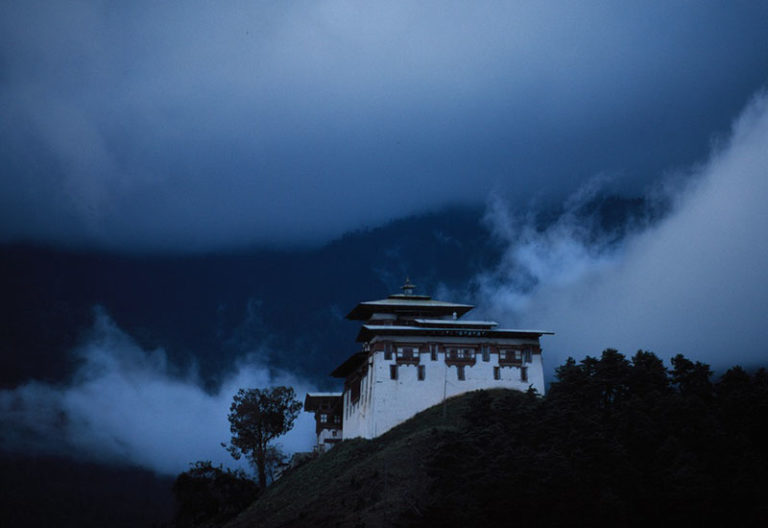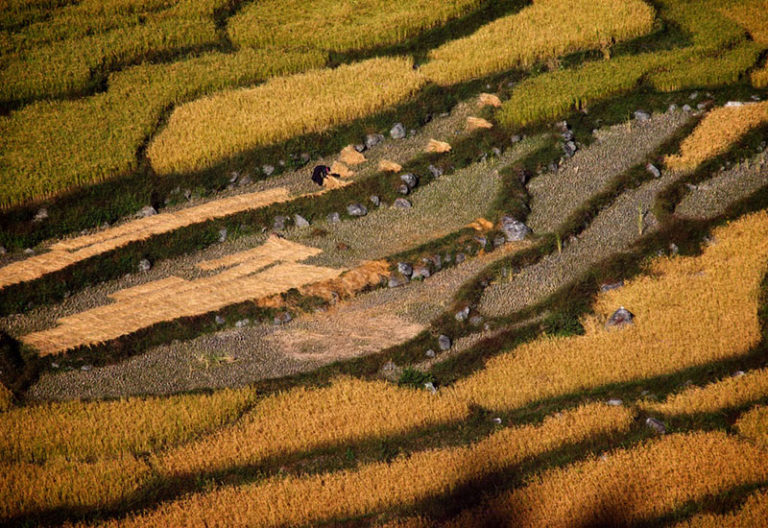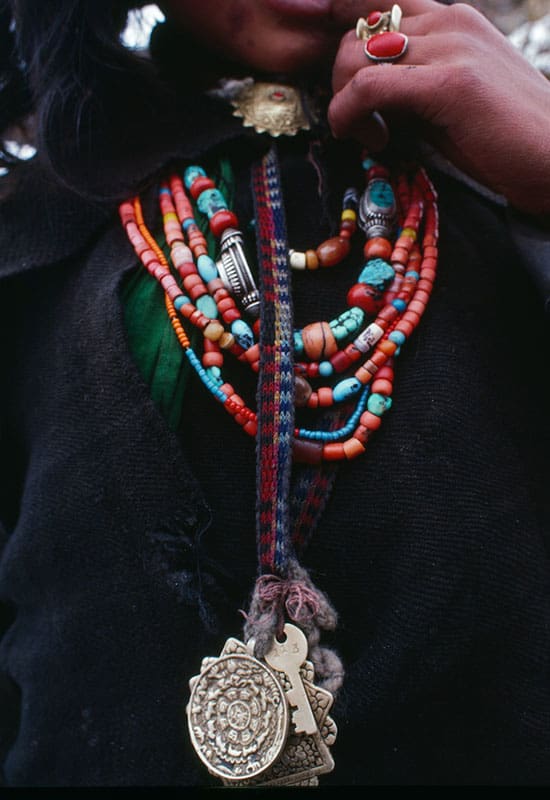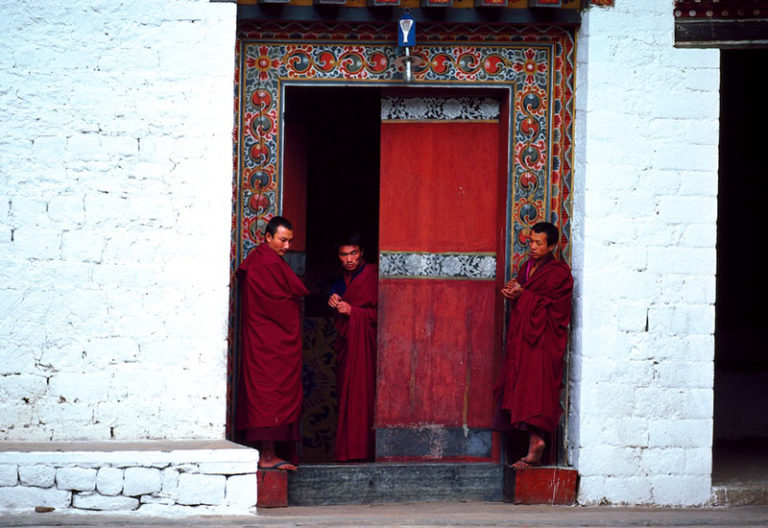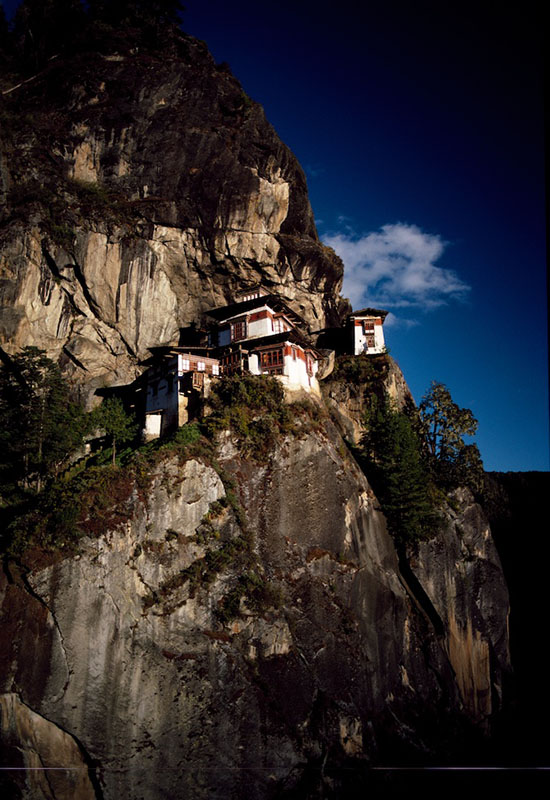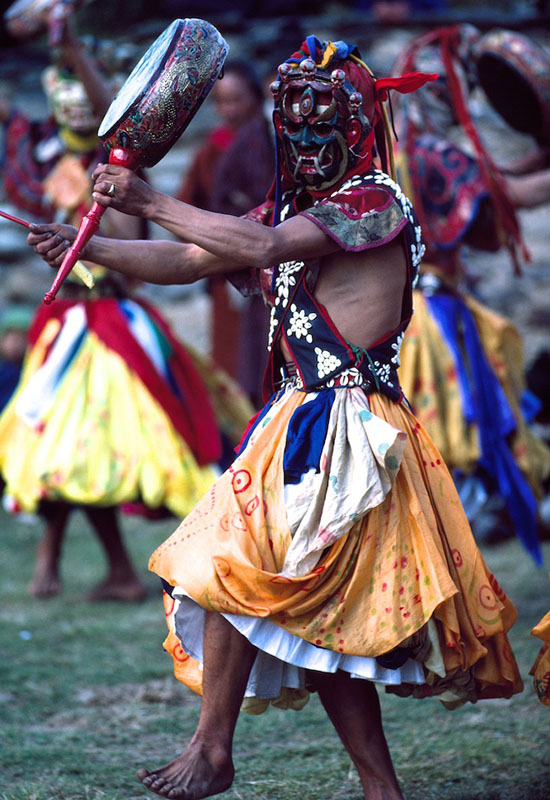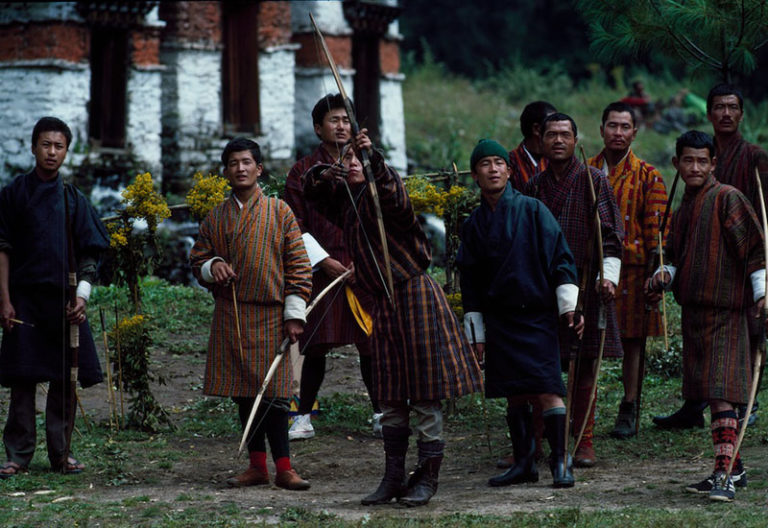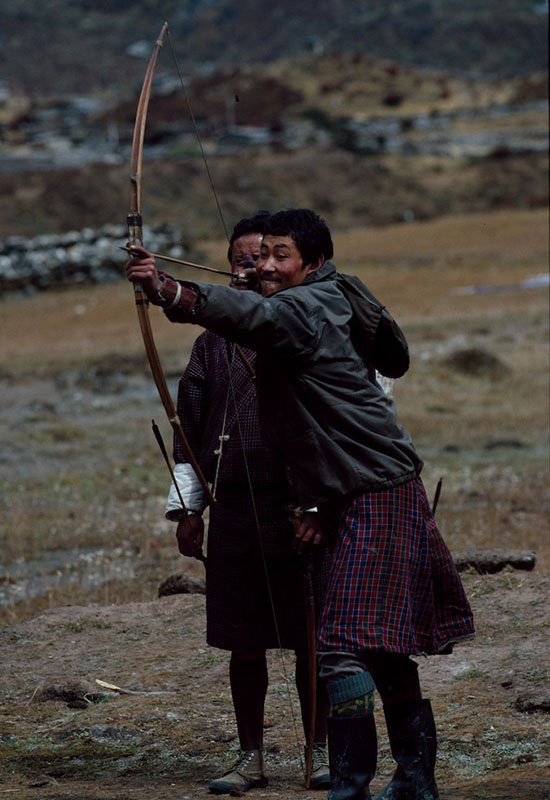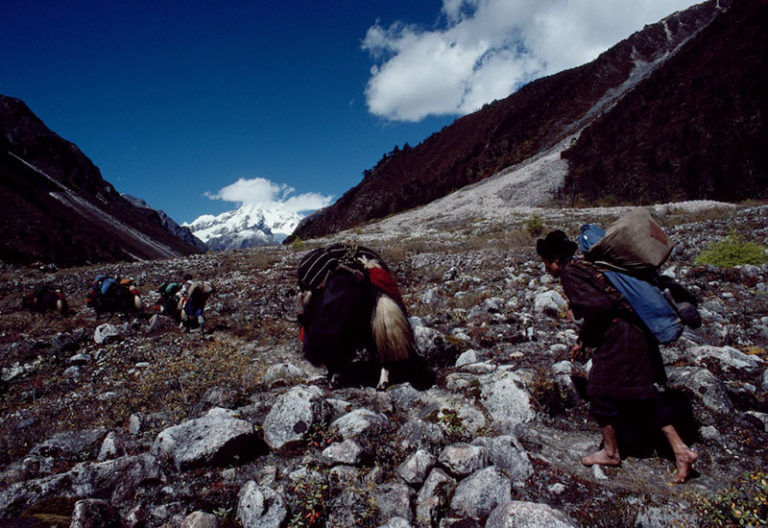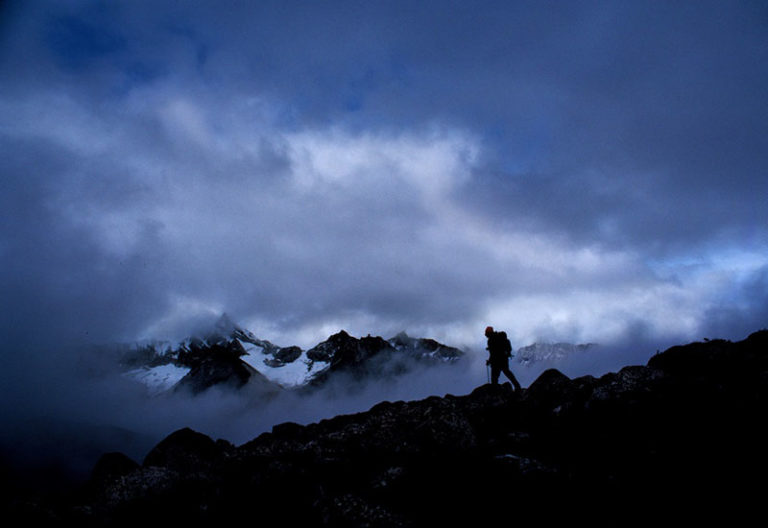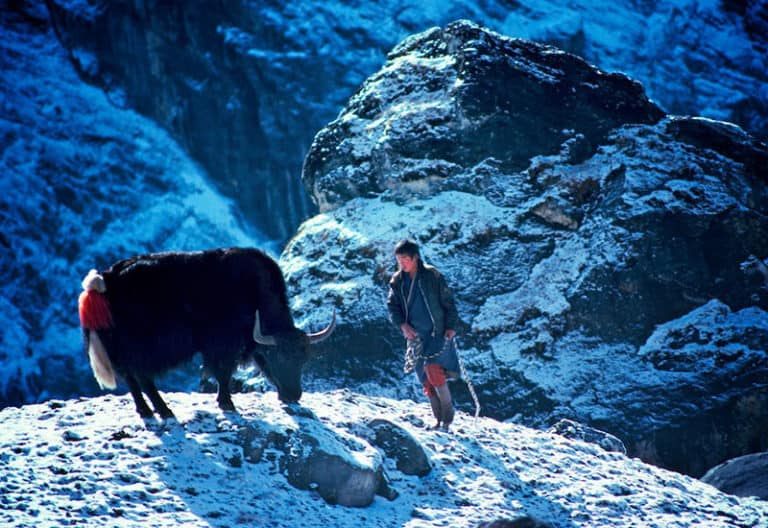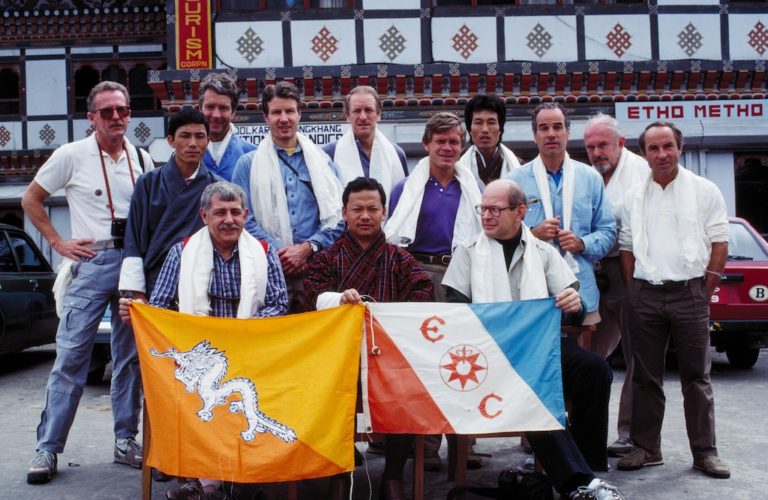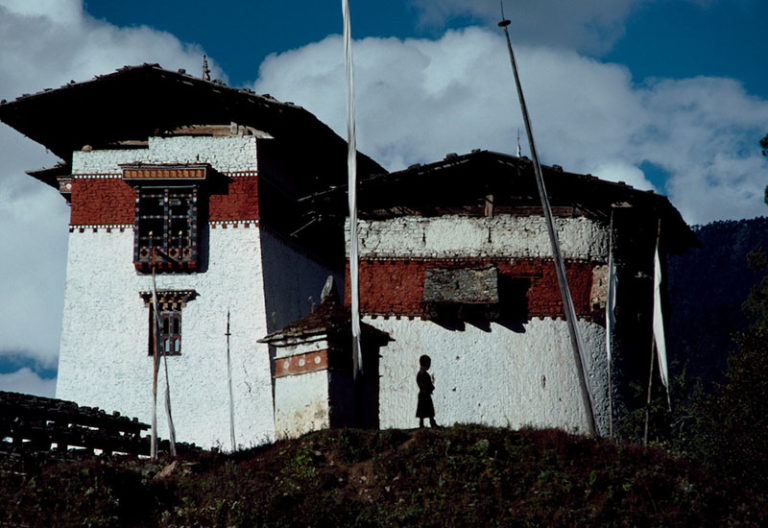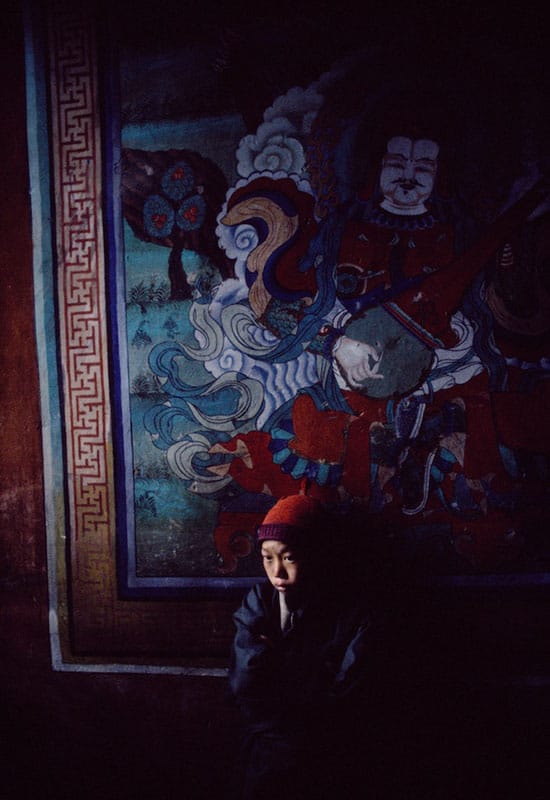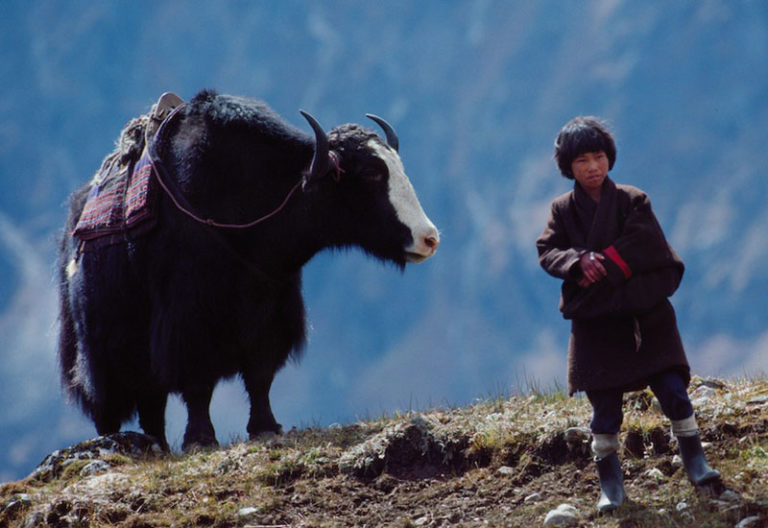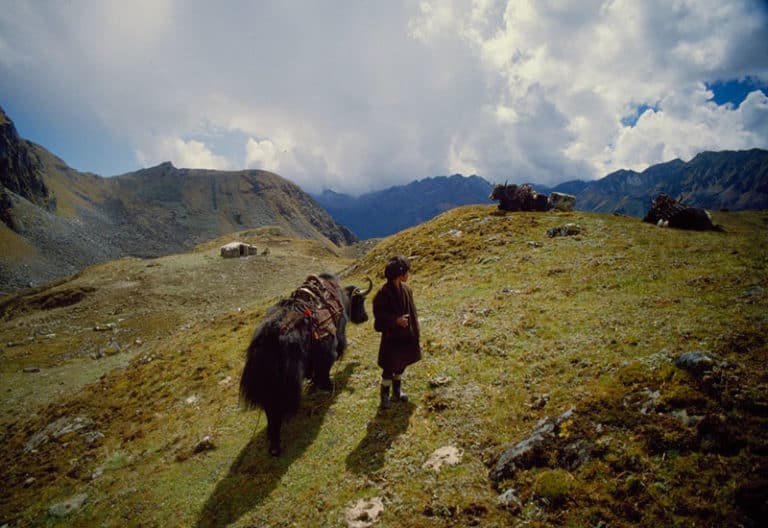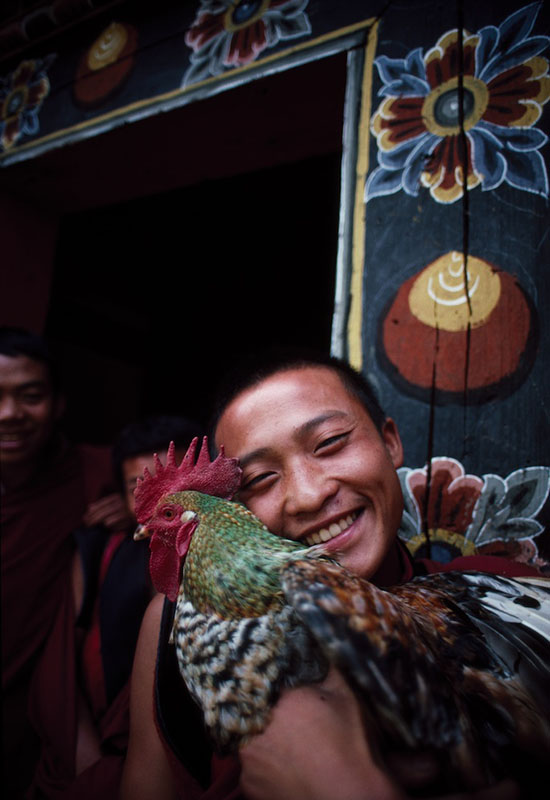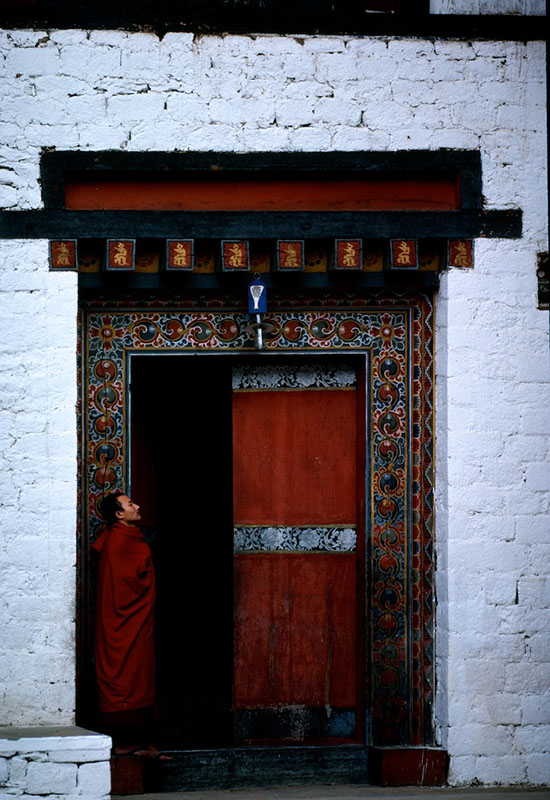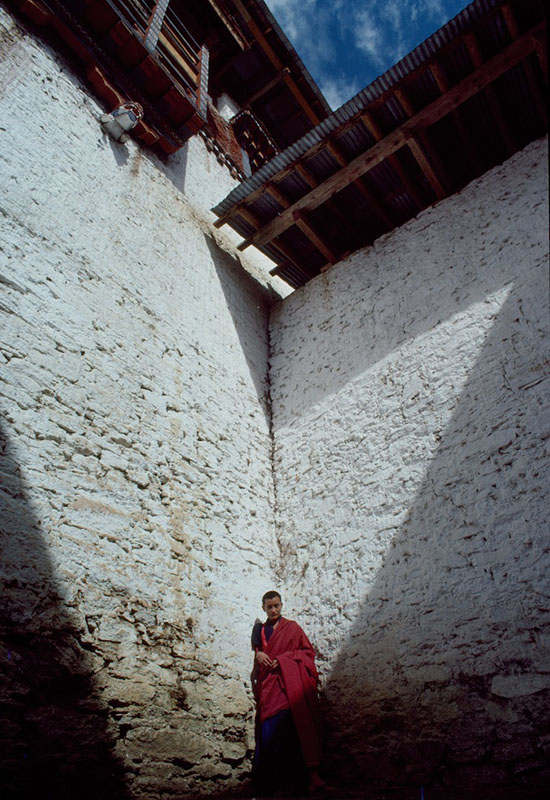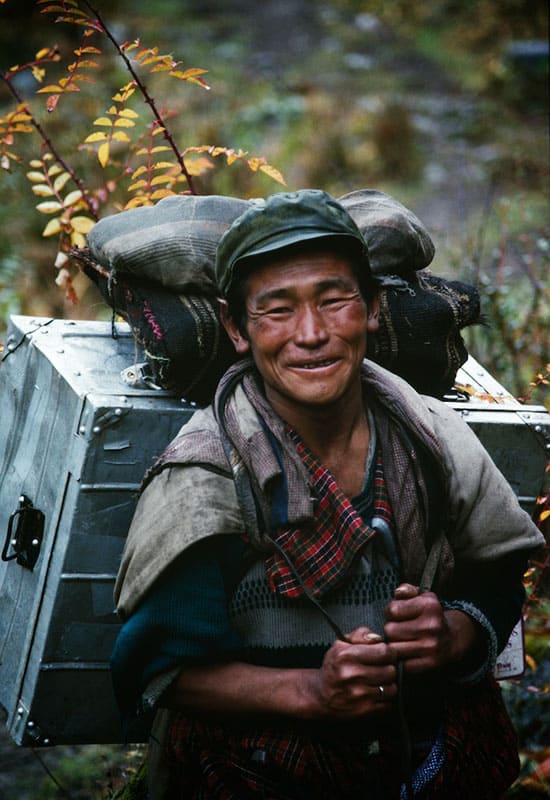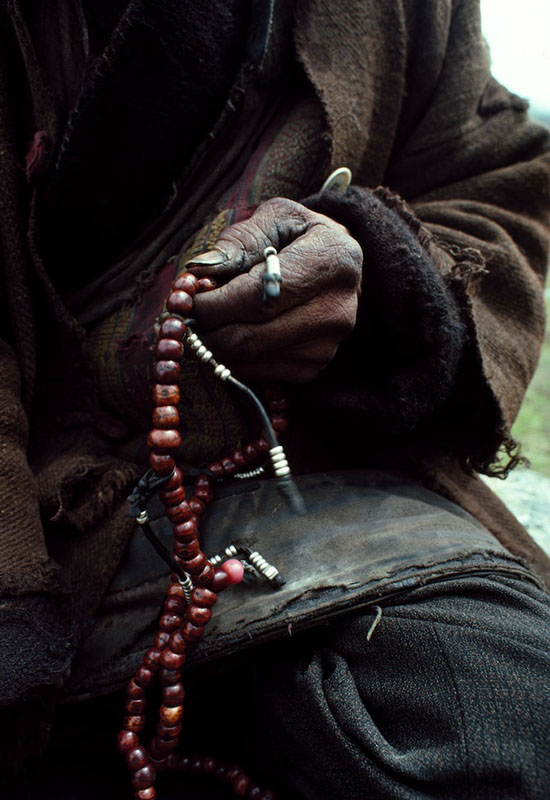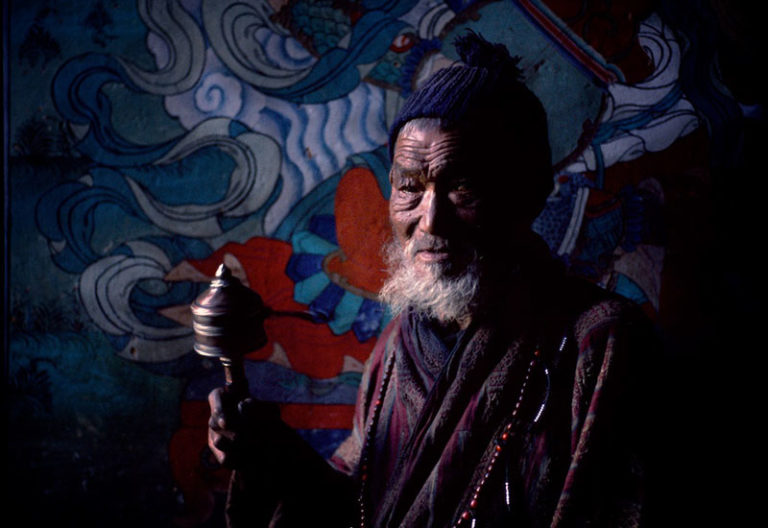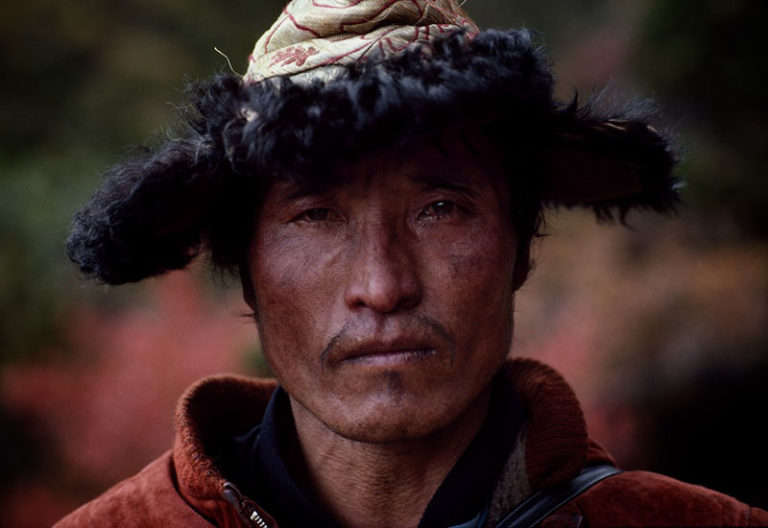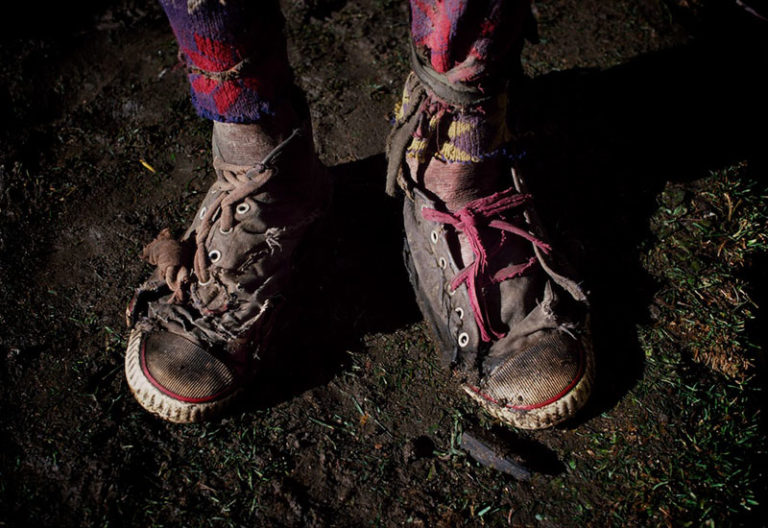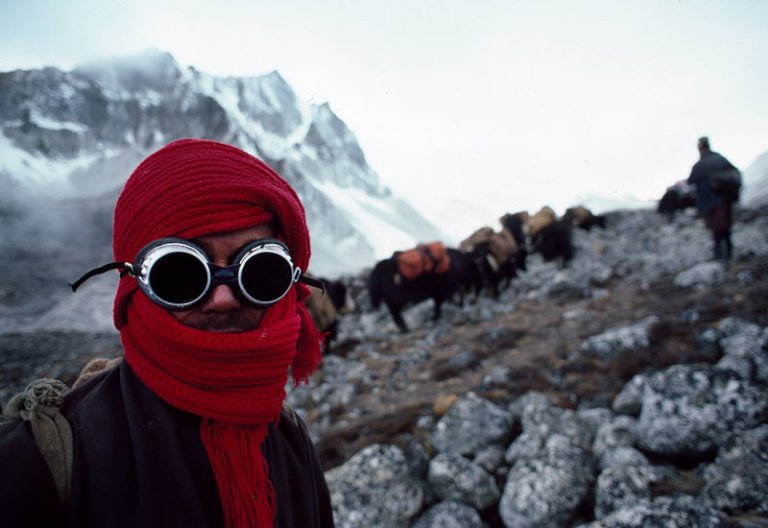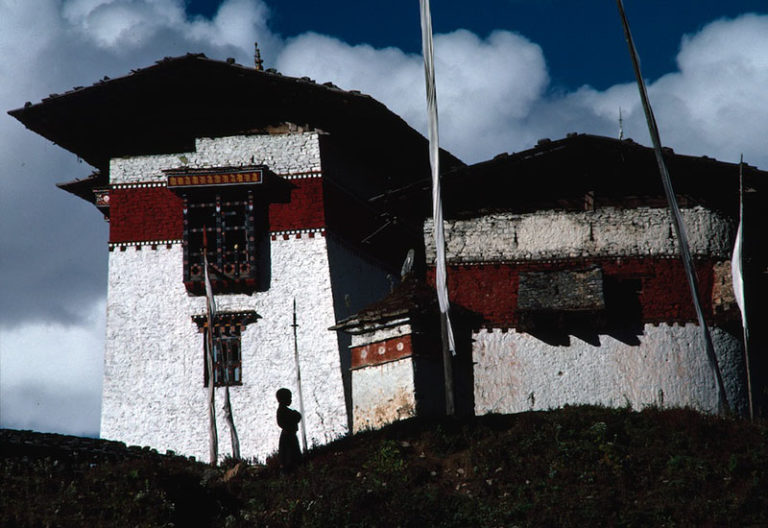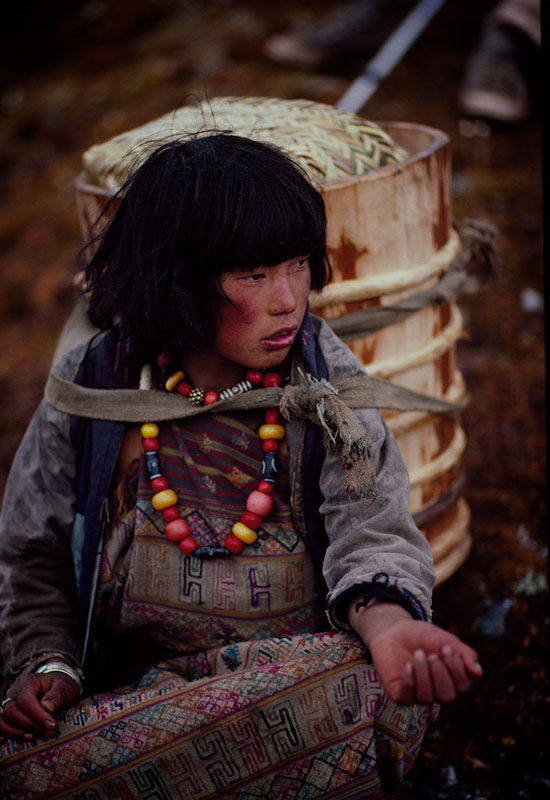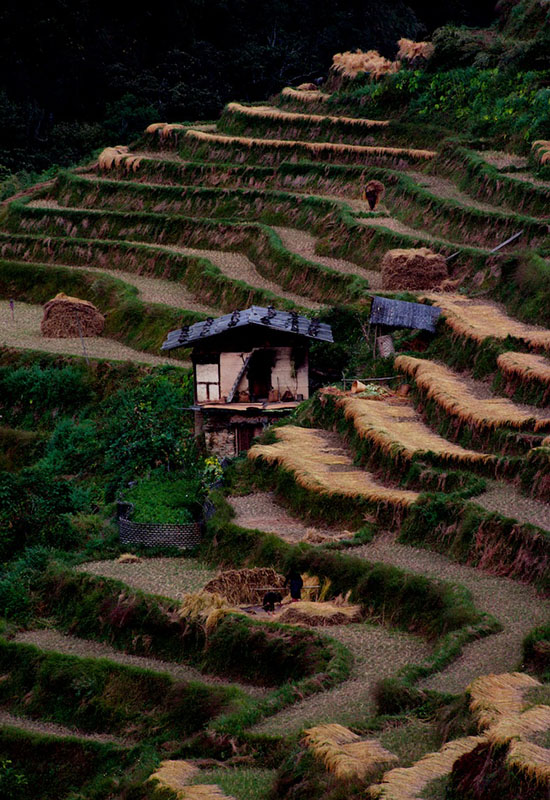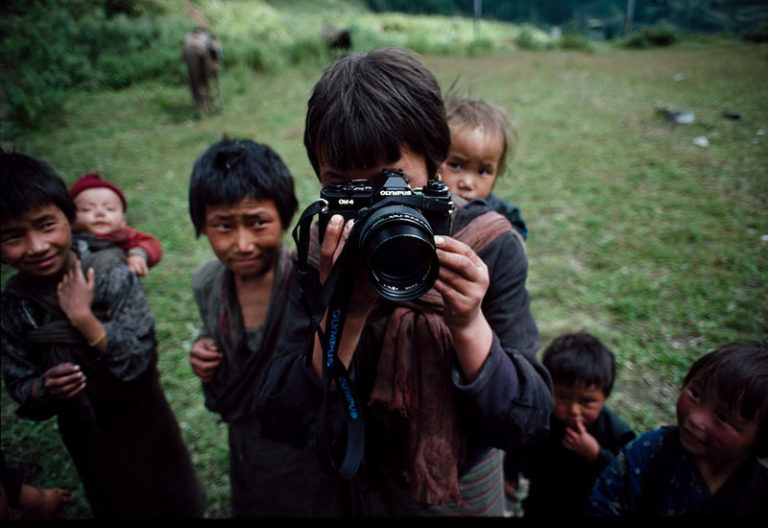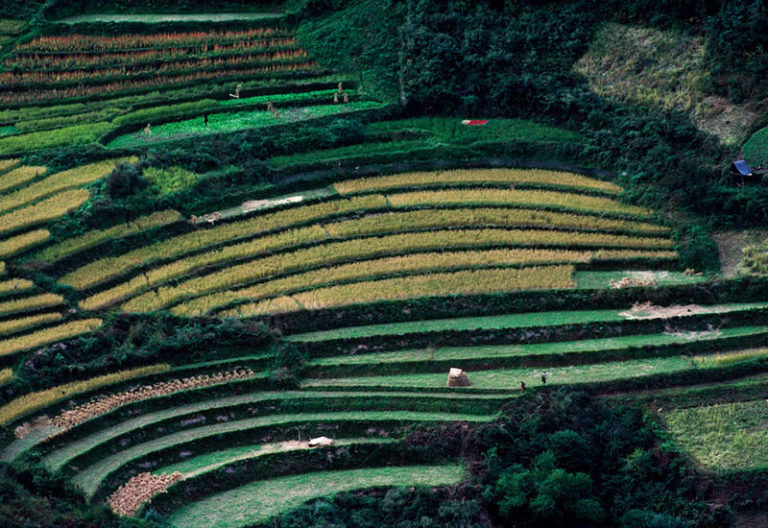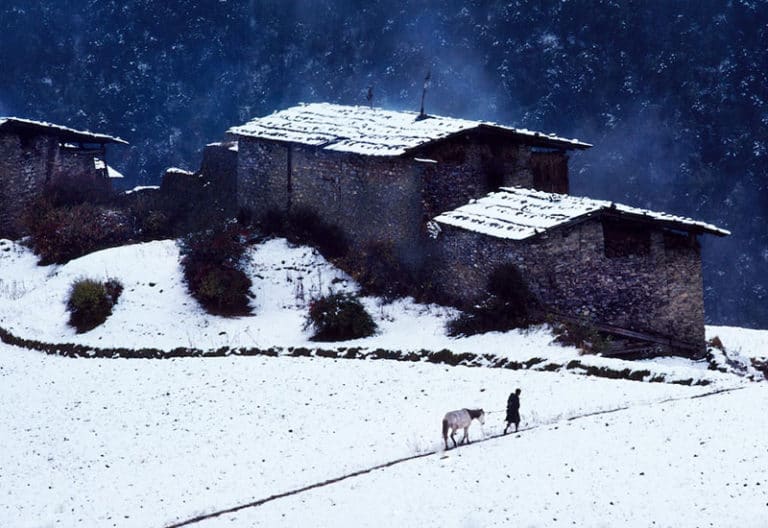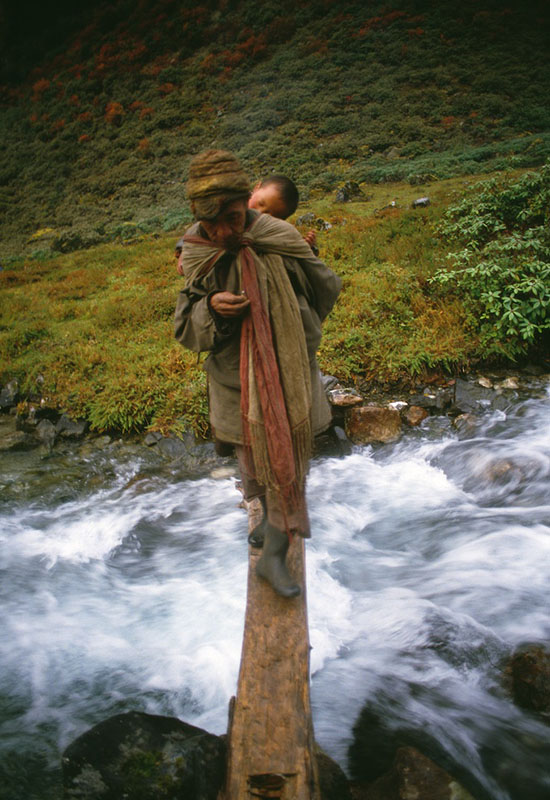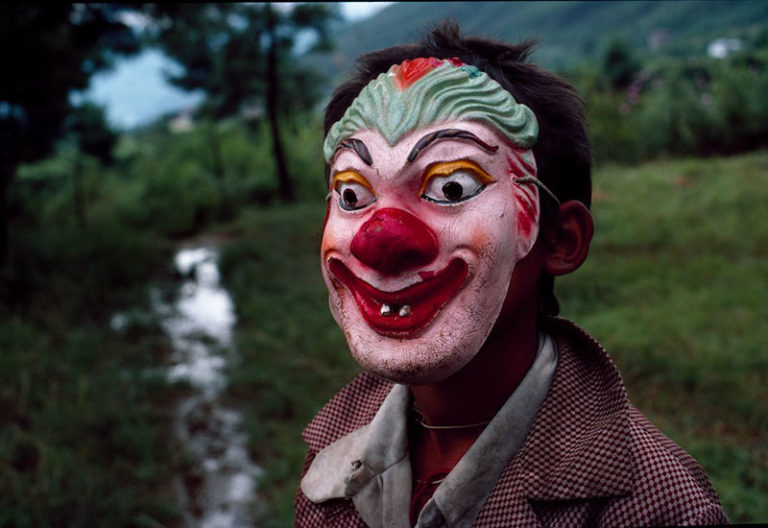Main Menu
Through The Lens of William Thompson
National Geographic Photojournalist & Father
Change In Plans
I was in a hotel room in Delhi, after completing three major stories for National Geographic: Heart of the Himalaya, Everest Aerials, and The Kathmandu Valley. After living in Nepal for three years, I had many Nepali friends, close friends, and I would miss them. But I was ready for western food and to be somewhere quiet, out of the chaos of Asia. I was on my way home—or at least, that is what I planned.
A knock on the door and a Telex would change my travel plans. The Telex read, simply:
Stay in Delhi. I will be there tomorrow with a proposal.
The message was from Barry Bishop, the Chair of the Exploration and Research Committee at the National Geographic, and one of the successful climbers of the 1963 American Mt. Everest expedition.
Barry arrived with proposal in hand. The National Geographic and Rolex were co-sponsoring an expedition to climb a remote peak in the Bhutan Himalaya, consisting of some of the most notable climbers in the world: Yvon Chouinard, Doug Tompkins, John Roskelley, Rick Ridgway, and Barry Bishop. The NGS wanted me to photograph the climb. I couldn’t turn down the opportunity. When I said yes, Barry, in his inimitable style, handed me a small box with a Rolex label…
Bhutan
Bhutan is a fascinating country, running East and West along the spine of the Himalaya, bordering on China. The country, unlike Nepal, was heavily forested, and these were healthy forests. There were enormous numbers of clear, free-flowing rivers, which the Indian neighbors to the south wanted to damn for power. The landscape of this high and hidden country was stunning—vast snowfields and ice-enshrouded peaks, with one major road that traversed the country, passing many enormous, fortified palaces, or Dzongs, populated with Buddhist monks. All of the country was protected from the ravages taking place in India.
Bhutan was a kingdom at that time, with a real king who insisted on tradition: the multiplicity of wives; clothing worn by men and women should of traditional style; and houses should built in the historic Bhutanese-style. Other than soccer, the major sport was long-range archery. Competitions took place throughout the country.
The Climb
We all assembled in Thimphu, the capital, where we sorted gear and food to be loaded onto yaks for the arduous trek to basecamp. We used the giant mountain beasts, as they are very strong and, despite their massive size, can climb difficult rocky trails. Mules and horses do not do well above 10,000 feet…yaks do.
A sensual walk through rich forests led us to basecamp…a joy of a trek. When we arrived, we discovered that our travels through these massive Himalaya valleys had taken a wrong turn. We now faced miles of an impossible-to-navigate glacier, away from where we were to begin the climb. There was a collective, stunned disbelief among the group.
The climb was, in all probability, a no-go… so what were we to do? A guide, Barry, and I decided that we would trek through these vast mountains from our location in the east of the country through the high passes all the way to the capital. It was risky, as some of the valleys were above 18,000 feet, winter was approaching, and we didn’t want to spend winter in one of the stone houses, existing on tsampa—powdered barley—and hot chile peppers, staple Bhutanese food.
The trek took more than a month, and was one of the most beautiful excursions I had taken. We traveled through interesting, remote villages—the inhabitants of one were called the “spider hat” people. We explored the massive Lunana Valley in the middle of the Himalaya, the beauty was incredibly breathtaking. The people of this valley lived in yak hair tents through the winter when the temperature drops far below zero. The altitude we trekked through varied from 9,000 feet to 18,000 feet, and were somewhat difficult for those of us not used to continuous travel at those heights.
We experienced occasional snow, which worried our guide, not wanting us to become snowbound for the winter. Astonishing was that our guides and porters did not wear shoes on our trek—they just slogged through the snow with impunity, as well as along the extremely difficult terrain, often with no trail, up and down deep canyons, navigating almost impossible rock walls.
The Watch
As soon as Barry presented the Rolex watch to me, I put it on. I had wanted a Rolex for a long time, as my father wore one all the time, which was to become mine, but it somehow disappeared at the time of his passing. Now, I was given this beautiful instrument to commemorate an incredible time in my life. I continued working for the National Geographic for a number of years, and 36 years later, I continue wearing the Rolex, which never leaves my wrist, other than for an occasional cleaning.
After the Bhutan excursion, I worked for two years on an important story for NGS, “Elephants of the World,” which took me to Asia for one year, and another year traveling throughout the continent of Africa. I camped with pygmies in the darkness wet of the Central African Republic. I rode my own elephant for a month in the Terai of Nepal, creating images of the interface between Bengal tigers and elephants. I traded the heat of the skeleton coast of Namibia. I worked with biologists to determine if the small jungle elephant was of another species (it was not). My Rolex, handed to me by my wonderful friend Barry Bishop, has accompanied me around the world. It has been my pal for a long, long time.
The elephant story was the last for me as a journalist. So many years of complex travel, loneliness, living in meaningless hotel rooms, and squalid, insect-filled tents ended after the birth of my son—I wanted to see him grow up.
He will soon be 30 years old, and soon I will be 80…hard to believe. I still feel young, I still ski, and, pre-Covid, I trekked a few summers in the high, northern Himalaya, filming nomad yak herders living in the altiplano of Zanskar, India. My son has been with me on many of these, and other excursions.
I do not want to pass away and have my loyal Rolex disappear, as did my father’s watch. Thus, I will give my son, Parker, my inscribed Rolex Explorer on his birthday. My wrist will feel light, but I love the idea that my Rolex has the opportunity for another 36 years of appreciated existence. What a lovely and meaningful gift for a son to receive from his father, wrapped in memories.
That watch has seen a substantial part of the earth and, as its namesake implies, I trust that it will continue to Explore.

